New York City’s past is deeply intertwined with the dark history of slavery. Yet, amid the horrors, there’s an inspiring story of courage and resilience – the city’s role in the Underground Railroad. This tour uncovers the hidden gems of this complex legacy, from tracing escape routes to exploring abolitionist sites. Visitors will be captivated as they discover how everyday New Yorkers risked everything to help the enslaved find freedom. It’s a powerful experience that sheds light on a often overlooked aspect of the city’s past, leaving you eager to learn more.
This experience made our list of the 25 Best City Tours In New York City.
Key Points

- The tour uncovers New York’s unique history, revealing how New Yorkers risked their lives to help people escape the horrors of slavery.
- The tour traces the historic escape routes used by slaves fleeing to freedom, highlighting key sites along the New York City Freedom Trail.
- The tour describes the era of slavery and the intricate network of the Underground Railroad, honoring the brave ‘conductors’ who provided assistance to fugitive slaves.
- The tour retraces the paths taken by fugitive slaves and shares stories of the risks and sacrifices made by abolitionists who operated the Underground Railroad.
- The tour highlights the pivotal role slaves played in transforming American society, including their contributions to the construction of Fort Amsterdam and the development of colonial New York.
Uncovering New York’s Unique History
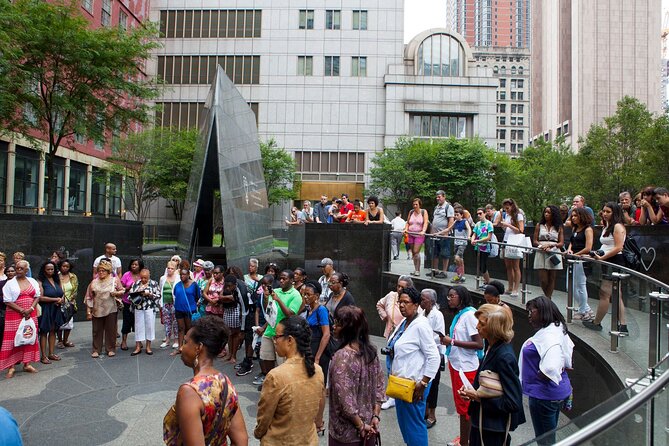
Through the New York City Slavery and Underground Railroad Tour, visitors can uncover a unique and often overlooked part of the city’s rich history.
The tour takes participants on a journey through the hidden stories of the Underground Railroad, revealing how New Yorkers risked their lives to help people escape the horrors of slavery.
Along the way, they’ll explore historic sites like Fort Amsterdam, where the role of slaves in transforming American society is examined, and the African Burial Ground National Monument, a sacred space that honors the lives of those who were enslaved.
Want to dig deeper into New York City? We've also reviewed these city tours
Tracing the NYC Freedom Trail
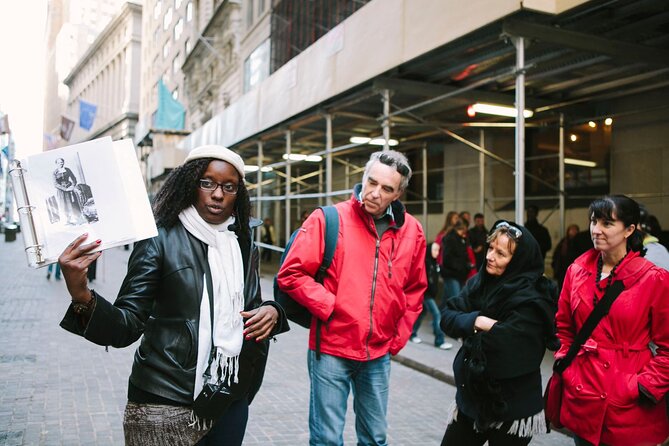
The New York City Slavery and Underground Railroad Tour takes visitors along the NYC Freedom Trail, unveiling the historic escape routes used by slaves fleeing to freedom. Participants can trace the steps of courageous individuals who risked everything to help others escape the horrors of slavery.
The tour highlights three key sites along the trail:
-
Wall Street, where guides share stories of slaves using the maze of streets and alleyways to evade capture.
-
The African Burial Ground National Monument, a sacred space honoring the enslaved Africans who built New York.
-
The former site of the first African-American church, a hub of the abolitionist movement.
Through these poignant stops, the tour provides a powerful and educational experience, shedding light on New York’s complex history.
Risking Lives to Escape Slavery
During the era of slavery, many New Yorkers risked their lives to assist enslaved individuals in escaping to freedom through the intricate network of the Underground Railroad.
These brave souls, known as ‘conductors,’ provided safe houses, transportation, and guidance to help fugitives navigate the perilous journey to the North.
Former slaves and free African Americans, as well as white abolitionists, all played crucial roles in this clandestine operation.
They faced severe consequences, including imprisonment and even death, if discovered by authorities. Yet their unwavering commitment to the cause of liberty drove them to defy the law and their own safety to help others achieve the freedom they deserved.
This heroic chapter of New York’s history remains a powerful testament to the human spirit.
Discovering Underground Railroad Stations
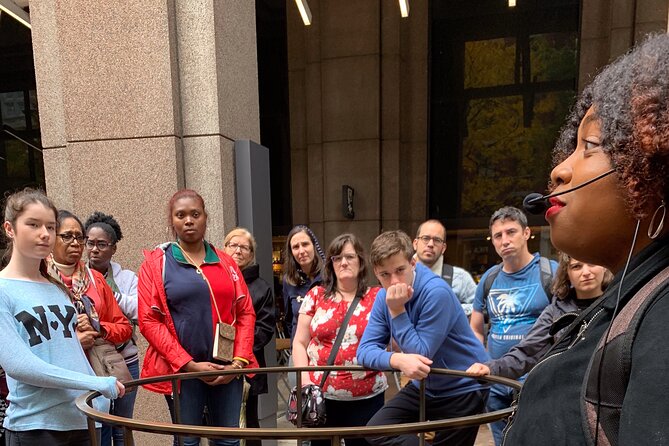
Visitors on the New York City Slavery and Underground Railroad Tour retrace the paths taken by fugitive slaves as they uncover former city stations that were part of the secretive network. These clandestine locations provided safe havens, food, and transportation for those escaping enslavement.
The tour guides visitors through the streets, sharing stories of the risks and sacrifices made by abolitionists who operated the Underground Railroad.
Three key elements of these stations were:
- Discretion – Stations maintained strict anonymity to avoid detection by authorities.
- Speed – Slaves moved quickly through the network to reach freedom.
- Selflessness – Locals jeopardized their own safety to help others achieve liberty.
Uncovering these historic sites provides a powerful, emotional connection to the struggles of the past.
Learning About Abolitionist Figures

Alongside retracing the paths of the Underground Railroad, the New York City Slavery and Underground Railroad Tour highlights the important abolitionist figures who risked their lives to help those escaping enslavement.
Visitors will learn about the courageous actions of people like Thomas Downing, a free Black businessman who provided safe passage and employment opportunities for fugitives.
The tour also covers the work of white abolitionists like Arthur and Lewis Tappan, who used their wealth and influence to support the anti-slavery movement.
- SUMMIT One Vanderbilt Experience Ticket
- Statue of Liberty and Ellis Island Tour: All Options
- SoHo, Little Italy, and Chinatown Walking Tour in New York
- New York City Statue of Liberty Super Express Cruise
- 4.5-Hour City Tour: Statue of Liberty, 9/11 Memorial, Wall Street
- Guided Food Tour of Chinatown and Little Italy
Transforming American Society at Fort Amsterdam
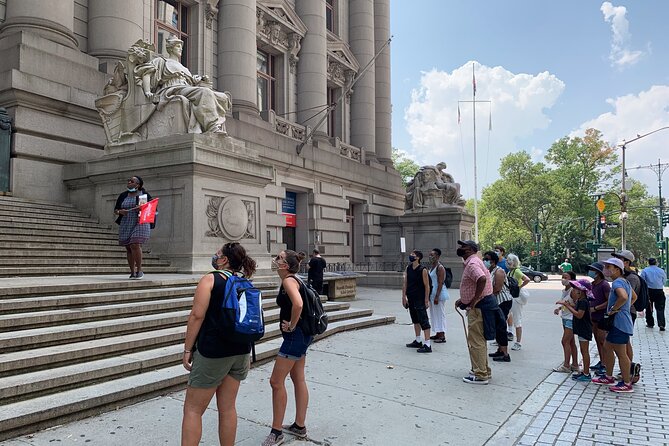
At Fort Amsterdam, visitors learn about the pivotal role slaves played in transforming the American landscape through their vital contributions to the colony’s infrastructure and economy.
Enslaved individuals were instrumental in constructing the fort, clearing land, and cultivating crops that fueled the colony’s growth. Their labor enabled the hotel of Dutch settlements and laid the groundwork for the future metropolis of New York City.
The tour highlights how:
- Slaves built the fortifications and other structures that protected the colony.
- Enslaved workers toiled in the fields, growing food that sustained the population.
- The forced labor of Africans was essential to the colony’s early development and prosperity.
This tour illuminates the profound impact of slavery on the American colonies and the nation’s formative years.
Exploring the African Burial Ground Monument
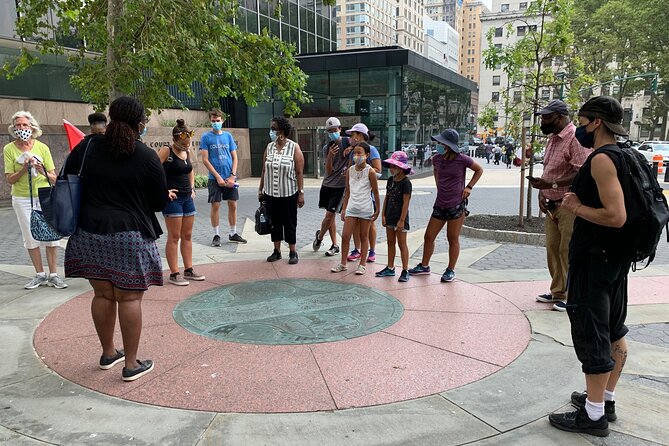
The African Burial Ground National Monument stands as a solemn testament to the lives of enslaved Africans who were laid to rest in this sacred space, their final resting place hidden from history for centuries.
Visitors to the site can explore the memorial, which honors the more than 15,000 Africans buried there between the 17th and 18th centuries.
The monument features an interpretive center and exhibits that shed light on the lives and contributions of these enslaved individuals, who played a crucial role in the development of colonial New York.
Exploring the African Burial Ground offers a profound and thought-provoking experience, reminding visitors of the profound human cost of slavery and the resilience of the human spirit.
Logistical Details and Tour Reviews
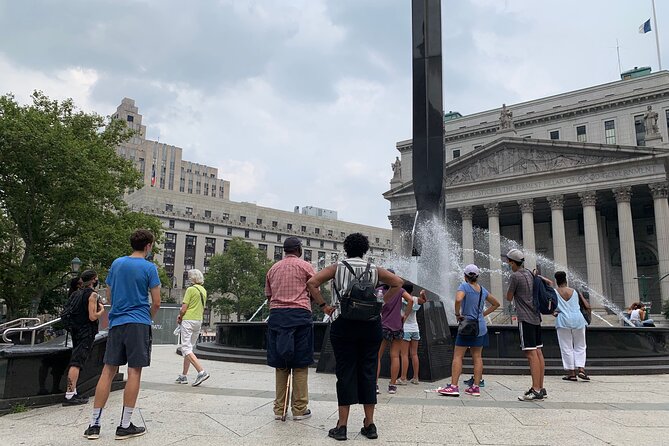
The tour includes a local guide and hotel pickup and drop-off, ensuring a seamless and convenient experience for travelers. The meeting point is in front of the National Museum of the American Indian, and the tour concludes at the African Burial Ground National Monument.
The tour is wheelchair and stroller accessible, making it accessible to a wide range of visitors, though travelers should have a moderate physical fitness level.
The tour has a 5-star rating based on 360 reviews, with visitors praising the informative and emotional nature of the experience. The knowledgeable guides receive high praise for their storytelling, and reviews highlight the tour’s impact on raising awareness about New York City’s history.
Visitors recommend the tour for its educational and thought-provoking experience.
Frequently Asked Questions
Can I Bring My Pet on the Tour?
No, pets are typically not allowed on tours due to safety and accessibility concerns. The tour is designed for a focused educational experience, and accommodating pets could distract from the tour’s primary purpose and impact. Visitors should plan accordingly.
Is Photography Allowed During the Tour?
Photography is generally allowed during the tour, but visitors should be respectful and avoid disrupting the experience for others. It’s best to check with the tour guide for any specific policies or restrictions.
Can the Guide Accommodate Special Dietary Requirements?
The guide can accommodate special dietary requirements if requested in advance. Travelers should notify the tour operator of any dietary needs so appropriate arrangements can be made to ensure an enjoyable and inclusive experience.
What Is the Dress Code for the Tour?
The tour has a relaxed dress code. Visitors should wear comfortable walking shoes and dress for the weather, as the tour involves outdoor exploration. There’s no need for formal attire.
Are Audio Guides Available for the Tour?
Audio guides aren’t mentioned as part of this tour. However, the knowledgeable local guide leads the walking tour and provides informative commentary throughout, allowing visitors to fully enjoy the historical experience.
Recap
The New York City Slavery and Underground Railroad Tour provides a powerful and educational experience that honors the lives of the enslaved and sheds light on the city’s complex past.
Visitors can trace historic escape routes, explore key sites, and learn about the courageous abolitionists who risked their lives to help people escape the horrors of slavery.
This tour offers a unique opportunity to uncover the overlooked history of New York’s role in the Underground Railroad.
More City Tours in New York City
- New York City Ghost Hunt: Greenwich Ghost Hunt
- New York City to Philadelphia City – Private Car Transfer
- Atlantic City Trips – Round Trip From NYC Area in H2 Hummer Limousine White
- Private Transport From Laguardia Airport to New York City
- New York City 90-Minute Cruise: Lady Liberty, Bridges and Skyline
- New York City Dinner Cruise With Live Music
More Tours in New York City
- Superheroes in New York City Private Walking Tour
- NYC’s Greenwich Village Private Walking Tour
- Jewish History of NYC Private Tour With Transfers
- Statue of Liberty & Empire State Building 5-hour Tour by Car
- Brooklyn Bridge Running Tour
- Choose Your Access Statue of Liberty and Ellis Island Small-Group Tour
More Tour Reviews in New York City
Not for you? Here's more things to do in New York City we have recnetly reviewed
- 3 Best Craft Beer Tours And Tastings In New York City
- 16 Best 2 Day Tours In New York City
- 15 Best 3 Day Tours In New York City
- 25 Best Cruises And Boat Tours In New York City
- 20 Best Christmas Experiences In New York City
- 25 Best Dining Experiences In New York City
- 15 Best Full-Day Tours In New York City
- 25 Best Helicopter Flights And Tours In New York City
- 2 Best Jet-Ski Experiences In New York City
- 4 Best 4 Day Tours In New York City
- 3 Best Coffee Tours And Tastings In New York City
- 20 Best Photography Experiences In New York City
